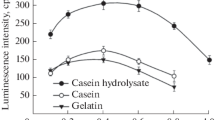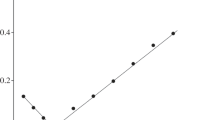Abstract
The cytotoxic effects of a number of widely used chemotherapeutic agents have been reported to be enhanced by heat (Hahn 1979; Hahn and Li 1982). The exact mechanism of this enhancement is not fully understood and might differ with the various compounds. Thermosensitization by sulfhydryl compounds in vitro has been observed by Kapp and Hahn (1979). We have previously reported that the thermosensitizing effect at 44° C and 43° C of sulfhydryl compounds like cysteamine can be modified by catalase (Issels et al. 1984). The enhancement of thiol cytotoxicity by hyperthermia was found to be due to the generation of activated oxygen species during the autoxidation of such compounds (Biaglow et al. 1984). The aim of this report was to evaluate the effects of cysteamine on heat survival curves at lower temperatures (42.5° C and 41.8° C). At these temperatures, the induction and development of thermotolerance have been shown to occur during the time of heating. We addressed the following questions: (a) to which extent the generation of activated oxygen species by cysteamine might be involved in the interaction between heat and cysteamine treatment at these temperatures; (b) the influence of cell density, and (c) the comparison of cysteamine with the thiol compound aminopropylamino-ethylthiophosphate (WR2721).
This work was supported by grants SFB 324/Is-B3 from the Deutsche Forschungsgemeinschaft. Part of the work was presented at the 11th Annual Meeting of the American Association for Cancer Research (AACR), Los Angeles, CA, 1986.
Preview
Unable to display preview. Download preview PDF.
Similar content being viewed by others
References
Biaglow IE, Issels RD, Gerweck LG, Varnes ME, Jacobsen B, Mitchell JB, Russo A (1984) Factors influencing the oxidation of cysteamine and other thiols: implications for hyperthermic sensitization and radiation protection. Radiat Res 100: 298–312
Hahn GM (1979) Potential for therapy of drugs and hyperthermia. Cancer Res 39: 2264–2268
Hahn GM, Li GC (1982) The interactions of hyperthermia and drugs: treatments and probes. Natl Cancer Inst Monogr 61: 457–460
Issels RD, Biaglow JE, Epstein L, Gerweck LE (1984) Enhancement of cysteamine cytotoxicity by hyperthermia and its modification by catalase and Superoxide dismutase in Chinese hamster ovary cells. Cancer Res 44: 3911–3915
Issels RD, Bourier S, Biaglow JE, Gerweck LE, Wilmanns W (1985) Temperature-dependent influence of thiols upon glutathione levels in Chinese hamster ovary cells at cytotoxic concentrations. Cancer Res 45: 6219–6224
Issels RD, Nagele AH, Boening B, Bourier S, Wilmanns W (1986) Promotion of cystine uptake in Chinese hamster ovary cells by WR2721 and related aminothiols (abstr). 34th Annual meeting of Radiation Research Society, Las Vegas, (Fi-1) p 142
Kapp DS, Hahn G (1979) Thermosensitization by sulfhydryl compounds of exponentially growing Chinese hamster cells. Cancer Res 39: 4630–4635
Author information
Authors and Affiliations
Editor information
Editors and Affiliations
Rights and permissions
Copyright information
© 1988 Springer-Verlag Berlin Heidelberg
About this paper
Cite this paper
Issels, R.D. (1988). Sulfhydryl Compounds as Thermosensitizers. In: Hinkelbein, W., Bruggmoser, G., Engelhardt, R., Wannenmacher, M. (eds) Preclinical Hyperthermia. Recent Results in Cancer Research, vol 109. Springer, Berlin, Heidelberg. https://doi.org/10.1007/978-3-642-83263-5_3
Download citation
DOI: https://doi.org/10.1007/978-3-642-83263-5_3
Publisher Name: Springer, Berlin, Heidelberg
Print ISBN: 978-3-642-83265-9
Online ISBN: 978-3-642-83263-5
eBook Packages: Springer Book Archive




